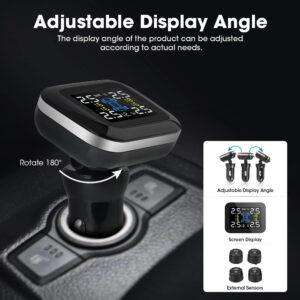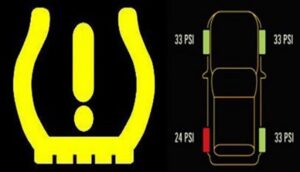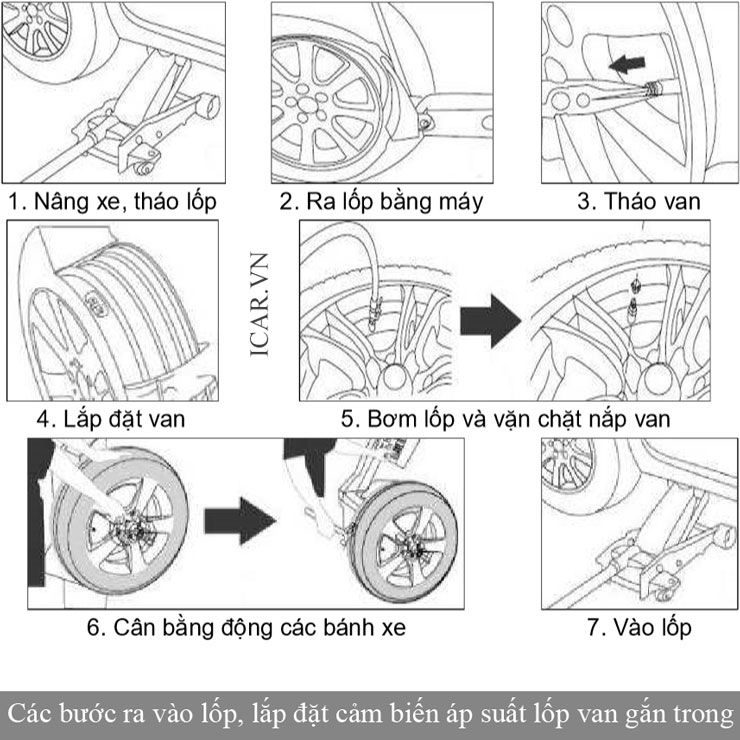Blog
The Cost of Ignoring TPMS Warnings: Safety and Repairs
The Cost of Ignoring TPMS Warnings: Safety and Repairs
The Tire Pressure Monitoring System (TPMS) is an essential safety feature in modern vehicles, designed to alert drivers when their tire pressure drops below safe levels. While many drivers may be familiar with the occasional TPMS warning light, not everyone fully understands the risks of ignoring these alerts. The cost of disregarding TPMS warnings goes far beyond the inconvenience of a potential flat tire. Ignoring TPMS alerts can lead to serious safety issues, expensive repairs, and significant impacts on your vehicle’s performance.
In this article, we’ll explore the potential consequences of ignoring TPMS warnings and why addressing low tire pressure issues promptly is crucial for your safety and your wallet.
What Is TPMS and How Does It Work?
Before delving into the costs of ignoring TPMS warnings, it’s essential to understand how the system works. TPMS is a safety feature that monitors the air pressure inside each tire. There are two primary types of TPMS:
- Direct TPMS (dTPMS): This system uses sensors inside each tire to measure the air pressure directly and sends the data to your vehicle’s onboard computer. When tire pressure falls below a certain threshold, usually around 25% below the recommended level, the system alerts you via a dashboard light.
- Indirect TPMS (iTPMS): Instead of using sensors, this system relies on the vehicle’s ABS (Anti-lock Braking System) to monitor tire rotation speed. When a tire is underinflated, it will rotate at a different speed than the others, and the system triggers a warning.
Both systems aim to keep you informed about tire pressure, but they only work effectively when you pay attention to the warning alerts and take action.
The Safety Risks of Ignoring TPMS Warnings
Ignoring a TPMS warning light or failing to address low tire pressure can significantly compromise your vehicle’s safety. Here’s how:
1. Increased Risk of Tire Blowouts
When tire pressure is too low, the tire’s structure becomes weaker, making it more prone to a blowout. Driving on underinflated tires generates excess heat, which increases the chances of the tire bursting while on the road. A blowout can be catastrophic, leading to loss of vehicle control, potential accidents, and serious injuries. Ignoring TPMS warnings puts you and others on the road at risk of such dangerous events.
2. Reduced Vehicle Handling and Stability
Low tire pressure directly affects the handling and stability of your vehicle. When tires are underinflated, they don’t make proper contact with the road, leading to decreased traction. This can make your vehicle more difficult to control, especially in adverse weather conditions such as rain or snow. Ignoring a TPMS warning could lead to a slippery or unstable driving experience, increasing the likelihood of accidents.
3. Longer Stopping Distances
Underinflated tires increase rolling resistance, which makes it harder for your vehicle to slow down. This means that your stopping distance will be longer than usual, putting you at greater risk of rear-end collisions, especially in emergency braking situations. If your TPMS alerts you to low tire pressure and you continue to ignore it, you’re inadvertently increasing your chances of needing to stop suddenly in a dangerous situation.
4. Increased Wear and Tear on Other Vehicle Components
Low tire pressure not only affects the tires themselves but also places additional strain on other vehicle components. For example, underinflated tires force the engine to work harder, reducing fuel efficiency. Additionally, the suspension system and brakes are subjected to more stress, which can lead to premature wear. Over time, ignoring TPMS warnings may lead to costly repairs in other areas of your vehicle.
The Financial Cost of Ignoring TPMS Warnings
While the safety risks are significant, the financial implications of ignoring TPMS warnings are also substantial. Here’s how ignoring tire pressure issues can lead to costly repairs:
1. Premature Tire Wear and Replacement
When your tires are underinflated, they wear unevenly. The tread on the outer edges of the tire wears faster than the center, resulting in premature tire degradation. This uneven wear reduces the lifespan of your tires, forcing you to replace them much sooner than you would if you maintained proper tire pressure.
Tires are a major investment, and consistently ignoring TPMS warnings can result in having to replace all four tires far earlier than expected, potentially costing hundreds or even thousands of dollars.
2. Increased Fuel Costs
Underinflated tires create higher rolling resistance, which means your engine has to work harder to maintain speed. This increased workload causes your vehicle to consume more fuel, leading to lower fuel efficiency. Studies have shown that driving with underinflated tires can decrease fuel economy by up to 3%, which can add up significantly over time, especially if you ignore TPMS warnings for extended periods.
3. Potential Damage to the Suspension System
Driving on underinflated tires can cause additional wear and tear on your vehicle’s suspension system. Since the tires are not properly absorbing impacts from the road, the shock absorbers and other suspension components take on more stress. This can lead to costly suspension repairs if you ignore low tire pressure for too long.
4. Risk of Wheel Damage
Underinflated tires are more susceptible to damage from potholes, curbs, and rough road conditions. The lack of adequate pressure causes the tire to lose its ability to absorb impacts, and the risk of rim and wheel damage increases. Repairing or replacing damaged wheels can be a costly endeavor, especially if multiple wheels are affected.

What to Do When TPMS Warning Lights Appear
If your TPMS light comes on, don’t ignore it. Here’s what you should do:
1. Check Tire Pressure
The first step is to check the tire pressure using a manual gauge. If you find that one or more tires are underinflated, inflate them to the recommended pressure levels. This information is usually listed on a sticker inside the driver’s side door or in the owner’s manual.
2. Inspect the Tires for Damage
Check your tires for visible signs of damage, such as punctures, cracks, or worn-out tread. If you notice anything unusual, have the tires inspected by a professional to determine if they need to be repaired or replaced.
3. Reset the TPMS
After addressing the tire pressure issue, reset the TPMS. Depending on your vehicle, you may need to manually reset the system or simply drive a short distance for the system to recalibrate.
4. Seek Professional Help
If the TPMS warning persists after correcting the tire pressure, there could be an issue with the system itself, such as a faulty sensor. In this case, take your vehicle to a professional mechanic or tire shop for diagnosis and repair.

Conclusion
Ignoring TPMS warnings may seem like a minor inconvenience, but the long-term consequences can be dangerous and expensive. Underinflated tires increase the risk of blowouts, decrease vehicle handling and stability, and lead to costly repairs and early tire replacements. By addressing low tire pressure promptly, you not only ensure your safety but also save money on fuel, tire replacement, and other vehicle repairs.
The next time your TPMS light comes on, don’t wait—take action. Regular tire maintenance and paying attention to TPMS warnings are essential for keeping your vehicle running smoothly, efficiently, and safely on the road.


